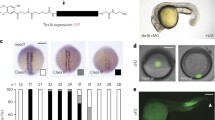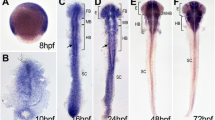Abstract
For embryos that have small pancreas and lack brain, eyes and thymus, the defects are caused by mutation of a single gene, Hes1. Hes1 encodes a basic helix-loop-helix (bHLH) transcriptional repressor and functionally antagonizes positive bHLH genes such as the neuronal determination gene, Mash1. Mis-expression of Hes1 inhibits cell differentiation and keeps cells at the precursor stage or proliferative stage. Conversely, in the absence of Hes1, the expression of positive bHLH genes is upregulated and cells differentiate prematurely without sufficient cell growth. As a result, the development of many tissues such as the brain, eye and pancreas is severely affected. Thus, Hes1 regulates tissue morphogenesis by maintaining undifferentiated cells. In the case of T cell development, Hes1 mutation leads to defects of expansion of early T cell precursors and thereby suppresses T cell fate specification. Thus, Hes1 promotes differentiation of some cell types in addition to maintenance of the undifferentiated state. Interestingly, Hes1 expression is controlled by the transmembrane protein Notch, which is activated by the ligands expressed on the surface of neighboring cells. Taken together, these results indicate that the Notch-Hes1 pathway, which is controlled by cell-cell interaction, plays an essential role in differentiation of many cell types.
Similar content being viewed by others
Author information
Authors and Affiliations
Corresponding author
About this article
Cite this article
Kageyama, R., Ohtsuka, T. & Tomita, K. The bHLH Gene Hes1 Regulates Differentiation of Multiple Cell Types. Mol Cells 10, 1–7 (2000). https://doi.org/10.1007/s10059-000-0001-0
Received:
Issue Date:
DOI: https://doi.org/10.1007/s10059-000-0001-0




